CHAPTER 3
I M M I G R A N T S A N D R E F U G E E S
B Y J O A N K L O S S N E R
“Absorb all cultures, but forget not your own.”
❖
- Taras Shechenko, poet laureate of Ukraine
Members of the Order of the Good
Templars pose for a group photo.
Oneida County has welcomed newcomers from other countries for over two hundred years and continues to do so in the twenty-first century. These residents, whether immigrants or refugees, have added a unique character to the area. They have contributed to the culture through their churches, mosques and synagogues, as well as the social organizations which provided them with a sense of community while adapting to their new home. Some of these entities created by early immigrants remain today while the newer refugee population is adding its own contributions.
Although the early immigrants came because of adverse conditions in their homelands, most made the choice to travel to this country. They left behind the familiarity of family, friends and customs to seek a better life. The wars, political and religious repression, crop failures and famine that caused them to leave were replaced by economic opportunity as well as freedom of speech and worship in their new land.
In the last 35 years Oneida County has become the home of refugees from places as diverse as Vietnam, Bosnia and Somalia, just to mention a few of the 31 countries represented in this new migration. Unlike the early arrivals these people have been forced to flee their homes because of wars, ethnic cleansing and religious persecution. They have been resettled here under the auspices of The Mohawk Valley Resource Center for Refugees, an agency of the Lutheran Immigration and Refugee Service network. The Center was officially established in 1979. The county today has the fourth highest C h a p t e r 3 ✦ 3 9
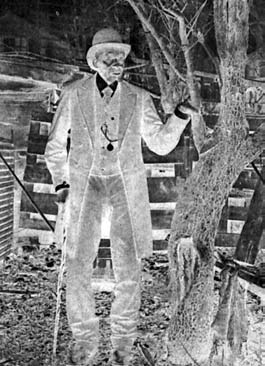

XXON Chapter 3_Layout 1 1/23/2015 12:36 PM Page 40
concentration of refugees in the United States and
they have changed the face of the area.
E A R L Y S E T T L E R S A N D
I M M I G R A N T S
African-Americans were among Utica’s first
residents and most lived at the eastern end of Main
Street in a neighborhood called “Hayti” until about
1860. This became a station on the Underground
Railroad. From that year until 1910, Post Street,
which ran between Burnet and Elizabeth Street,
was the home of the black community. They began
to move away from that area after the construction
of the firehouse on Elizabeth Street.
Since they were unable to get work in the
textile factories, many worked at service jobs
connected with the Erie Canal, the Mohawk
River and the turnpike. Ten local African-
❖
Americans fought in the Civil War but they were
Above: Sam Dove was a former slave
not acknowledged by local papers.
who attained his freedom before the
The black population remained stagnant
Welsh immigrants were among the early
Civil War after being brought to
until the 1940s when many migrant workers
settlers of the Mohawk Valley. In 1795 five
Utica. He was over 100 years old
who followed the ripening crops north decided
Welsh families came to the Steuben grant and
when he died and his funeral was
to remain in the Utica-Rome area. They began to
leased land near the present village of Remsen.
attended by many prominent people.
find employment in local industries that paid
In the next few years their numbers swelled and
He is buried in Forest Hill Cemetery.
well. Rome Air Depot also attracted workers,
most of them settled in Remsen, Steuben, and
both civilian and military. African Americans
Prospect, areas that reminded them of home.
Below: This sign near Remsen
also replaced white farm hands who had left the
They built their homes from the limestone they
acknowledges the early Welsh
farm to be trained to work in factories.
found along the banks of the creeks and
immigrants who settled in that
However, most black workers continued to be
constructed kilns for burning quick-lime.
area and were responsible for
employed by service industries like the local
There were plentiful grazing lands and soil
its development.
hotels and the train station.
suitable for growing crops for animals so dairy
farming became their major industry. The excess
milk that they produced was turned into butter
and cheese and taken to New York City where
there was a larger market for these products.
Their butter became very popular and was
known as “Oneida County butter.”
While the majority of the Welsh settled in the
northern part of the county, by the middle of the
19th century there were a number of families in
Utica. After the Civil War, returning vets tended
to move into the cities because of the declining
limestone industry and a reduced market for
dairy products. The city dwellers became
shopkeepers, craftsmen and mill workers.
Welsh women joined domestic service or
became seamstresses.
Later immigrants tended to settle in the cities
of Utica and Rome. The Germans who arrived
4 0 ✦ O N E I D A C O U N T Y : A n I l l u s t r a t e d H i s t o r y
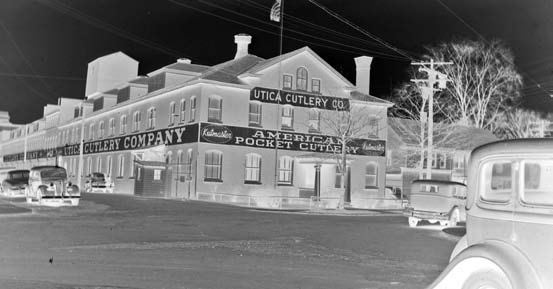
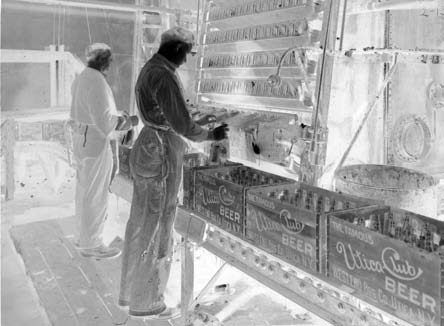
XXON Chapter 3_Layout 1 1/23/2015 12:36 PM Page 41
between 1840 and 1890 in Oneida County
and many Irish men and women came to work
❖
came primarily from states in southern and
in these factories.
Above: Utica Cutlery, established in
western Germany. By 1890 there were over
In addition to running small businesses,
1910, was one of the businesses
4,000 settlers from that country.
including hardware stores and breweries, two of
founded by the German immigrants,
Many German immigrants established
the most prominent local newspapers were
headed by a second generation
businesses in the area. Several of them still exist
founded by Irish brothers, William and Thomas
German-American, Jacob Agne.
today, the best-known being Matt Brewing
Baker. The Utica Daily Press began publication
Company, founded by F. X. Matt who had
in 1882, continuing until 1969; The Saturday
Below: Workers at West End Brewery
been trained as a brewer in Baden, Germany.
Globe first appeared in 1885 and stopped
are shown packing the firm’s popular
He started out as a brewmaster in a brewery
publication in 1924.
beer “Utica Club” which is still
and Biergarten owned by Charles Bierbauer. He
The Syro-Lebanese immigration to Oneida
produced today.
ultimately reorganized the business into the
County occurred in the years from 1890-1915.
West End Brewery. Other local businesses that
They left their homelands because there
owe their origins to German immigrants include
were limited natural resources and they
Bosserts, which sold metal products; Emil
were persecuted because of their Christian
Steinhorst and Sons, which manufactured
dairy and refrigeration equipment; and Utica
Cutlery Company, which employed many
German-Americans.
The construction of the Erie Canal beginning
in 1817 brought over 3,000 Irish people to the
area. Because many of them had experience
working on British canal projects they were
enticed to come to Upstate New York for thirty-
seven to fifty cents a day as well as room and
board. Workers cleared the trees and dug the
canal which was difficult work. After the first
part of the canal opened between Utica and
Rome many of them settled in Oneida County.
The Utica and Schenectady Railroad also
brought Irish workers to the area so that by the
middle of the 19th century they made up a large
percentage of the population. The advent of the
textile mills in 1847 attracted more immigration
C h a p t e r 3 ✦ 4 1
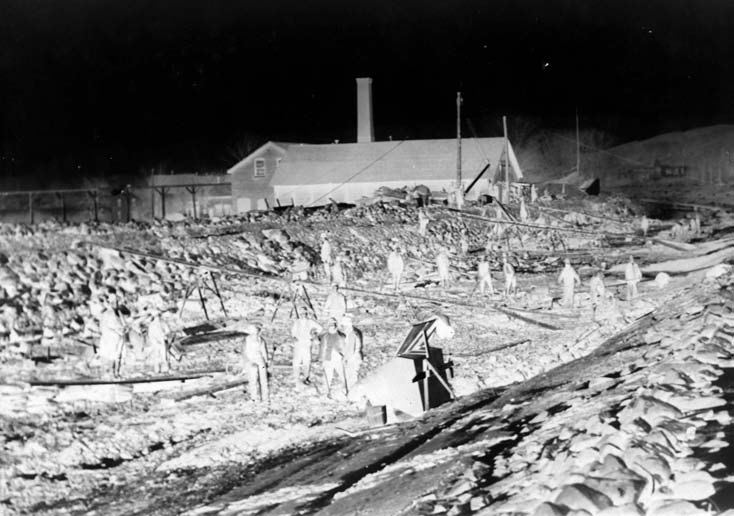
XXON Chapter 3_Layout 1 1/23/2015 12:36 PM Page 42
❖
faith. Many of them settled in Whitesboro and
waves of Poles and Italians arrived after that
Above: Workers begin the very
New York Mills where they were employed by
date. They settled in both Rome and Utica and
difficult work of preparing for the
the mills. Others became dry goods merchants,
found employment in a variety of places. The
digging of the Erie Canal. Most of the
bringing items from Lebanon to sell here. It
first wave of Italian immigrants came from the
laborers were Irish immigrants.
was said that they were born businessmen
northern provinces. They were followed by a
and traders who began as peddlers and
large contingent from the southern part of Italy
Opposite, top: Employees of the Rome,
became merchants, grocers, importers and
who came to escape poverty, compulsory
New York Textile Company are
clothing manufacturers. WWII and the GI Bill
military service and the political situation in
preparing to embark on a canal boat
provided many Syro-Lebanese with the
their country.
to “eat, drink and be merry” at
opportunity to get a higher education and have
In addition to the mills, some found
Sylvan Beach on August 19, 1922.
professional careers.
employment building the railroads, Delta Dam
Their social life revolved around their homes
and the Barge Canal. In Rome they also went to
Opposite, bottom: Delta Dam was one
where they would often visit one another. Their
work in the copper and brass industry. In both
of the projects that employed new
love of language was evident at gatherings
cities they opened grocery businesses, stores
immigrants. This photograph was
known as sahrahs where they would read
and bakeries. Craftsmen included tailors, who
taken in 1910.
poetry. Churches or clubhouses would sponsor
were the backbone of the local garment
theater presentations including Shakespearian
industry, barbers, and shoemakers.
plays and Arabic dramas.
The first migration of Poles to Oneida
The textile mills drew immigrants from
County occurred in the 1870s. They came
Poland and Italy later in the 19th century.
seeking freedom and fortune, and found
Although there were residents from those
employment in manufacturing and textile mills.
countries residing here prior to 1870, large
In the early 1900s many Polish came to escape
4 2 ✦ O N E I D A C O U N T Y : A n I l l u s t r a t e d H i s t o r y
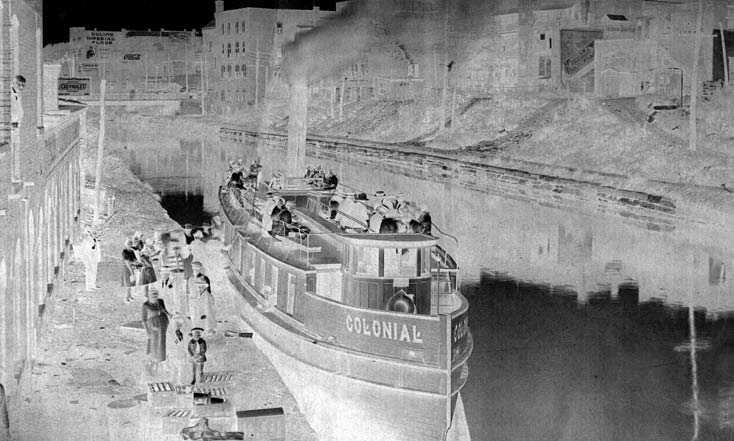
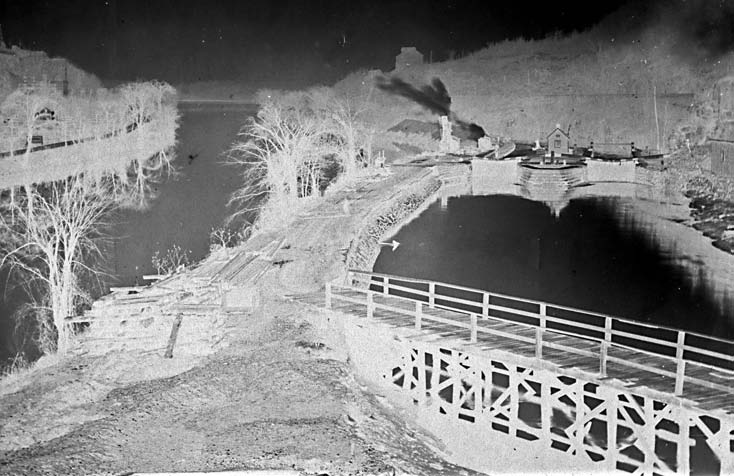
XXON Chapter 3_Layout 1 1/23/2015 12:36 PM Page 43
C h a p t e r 3 ✦ 4 3
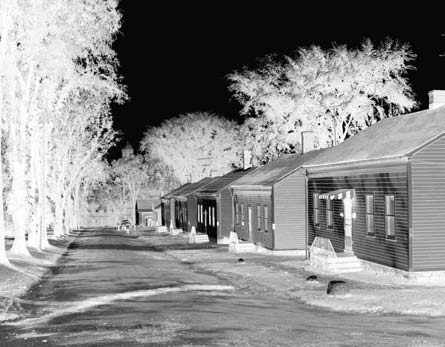
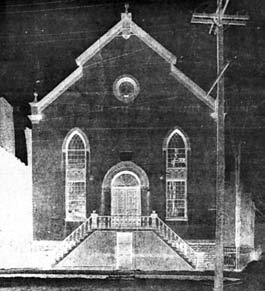
XXON Chapter 3_Layout 1 1/23/2015 12:37 PM Page 44
value on education and this led to professional
occupations for their descendants.
The first Jewish settlers in the area came in
the mid-19th century. Primarily peddlers they
chose the area because it was the geographical
center of New York State and gave them access
to the Erie Canal. They took their wares from
the cities out to the farms which were scattered
throughout the area and provided a “necessary
economic need.” The earliest Jews came from
Russia and Germany.
The Jewish community began on Whitesboro
Street where their strong religious beliefs
provided them with support and security,
since they were not readily accepted. On the
corner of John Street and Bleecker, they
established their first market which sold both
kosher and non-kosher products. As they
gained stature both economically and socially
they moved to the Cornhill area. Today they not
❖
German and Russian oppression since many
only own many local businesses but have
Above: Mill workers in New York
would be forced to serve in the Russian army.
entered professions and are a well-respected
Mills lived in these houses and paid
In order to adapt to their new homes they
segment of the population.
rent to the mill owners. Improvement
created social and religious structures centered
to these homes was one of the
on their church.
R E L I G I O U S L I F E
conditions workers demanded during
Some of these organizations continue to be
the labor unrest in the early 20th
part of the framework of the county and at that
“Churches tend to be the earliest and most
century.
time gave them a support network and
enduring institutions established by all
opportunities for social interaction. In 1910,
immigrant groups.”
Below: One of the earliest Jewish
there were over 30 Polish organizations active in
- Philip Bean
religious communities was known as
the city of Utica alone. Both Rome and Utica
“Beth Israel.” Their synagogue, the
had a Polish Home whose goals were to foster
Churches and synagogues provided structure
House of Israel, was built in 1889 on
understanding of the American way of life
and support and helped to maintain the cultures
the corner of Whitesboro and
and to encourage good citizenship and
of the new immigrants. Each group’s lives
Washington Streets and still existed in
participation in religious, political and patriotic
that location in 1948.
activities. It was through associations like this
that the new residents were able to become
active community members.
Another Slavic group that came to this area
toward the end of the 19th century were the
Ukranians. Occupation by the Soviet Union
following World War I and invasion by the
Nazis during World War II forced more
immigration, primarily from the western
Ukraine. They tended to settle in areas where
other Slavic peoples were already living.
A language barrier made employment
difficult so, like so many other immigrants, they
went to work in the foundries and mills. Some
worked on farms and ended up becoming
farmers themselves. The Ukranians placed high
4 4 ✦ O N E I D A C O U N T Y : A n I l l u s t r a t e d H i s t o r y
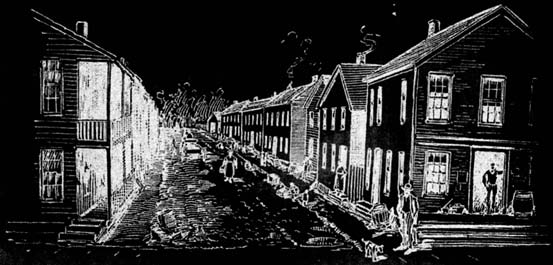
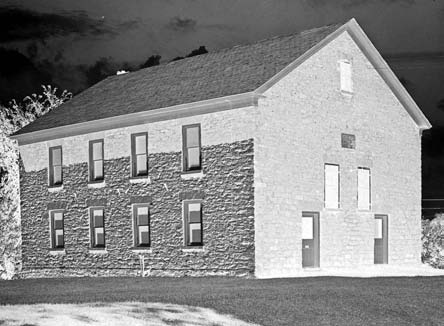
XXON Chapter 3_Layout 1 1/23/2015 12:37 PM Page 45
revolved around their religious organizations
houses of worship. Other Irish parishes were
❖
and afforded them places not only to worship
established in Utica including St. Patrick’s which
Above: This drawing depicts Post
but also to socialize and find mutual aid. They
was built in 1849 to accommodate the Irish
Street on which much of the African-
established societies to help new arrivals
living in west Utica. In 1835 the Irish founded
American community lived from 1860
financially by providing loans, death benefits
St. Peter’s parish in Rome and the present
until 1910. The illustration
and group insurance. Some of these, like the
church building was completed in 1897.
accompanied an article in the
Polish National Alliance, are in existence today.
The Italian newcomers also looked for solace
Saturday Globe .
The early residents, both African American
in their unfamiliar surroundings by creating
and Welsh, practiced denominations of
religious centers which provided them with the
Below: The Stone Church, Capel
Protestantism. After the Civil War the African
familiarity of home. At first they attended St.
Cerrig, is one of the early Welsh
Americans established Hope Chapel AME Zion
John’s where there was an Italian priest assigned
chapels located in the Remsen area. It
Church and, in 1922, St. Paul’s Baptist Church.
to serve them. The Bishop of Syracuse gave
contains one of the largest Welsh
Prior to this it is uncertain whether or not they
permission for the establishment of an Italian
libraries in the United States.
attended churches of their own but there are
parish in 1895 and the parish of St. Mary of
references to an African Bible class which was
Mount Carmel was incorporated. Because of the
formed in 1825 and was connected to the First
growing Italian population the need for a
Utica Presbyterian Society.
The Welsh were members of Calvinist
Methodist, Wesleyan Methodist, Congregation-
alist and Baptist sects. The early churches
relied on lay leaders and itinerant preachers.
Ultimately men trained in American seminaries
became leaders of the churches. In 1801 the
Welsh Baptist Church was formed in Utica
and in 1804 Capel Ucha Church was built
in Remsen.
Roman Catholicism was the dominant
religion of those who arrived in the middle of
the 19th century. Germans, Irish, Italians and
Polish all established Catholic churches in both
Rome and Utica. The earliest one was St. John’s
which was built on the corner of Bleecker Street
and John Street by the Devereux in 1821. Over
the years, St. John’s has hosted other immigrant
groups until they were able to build their own
C h a p t e r 3 ✦ 4 5
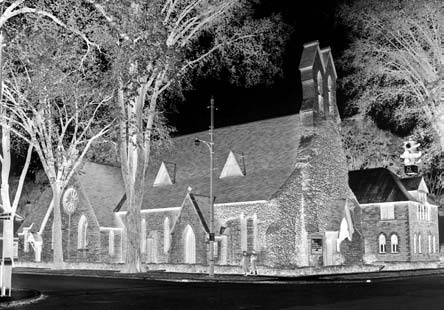
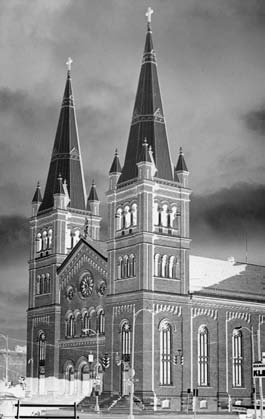
XXON Chapter 3_Layout 1 1/23/2015 12:37 PM Page 46
second parish was obvious and, in 1910, St.
Anthony of Padua Church was established, but
the church was not completed until 1925.
In Rome, St. John the Baptist parish was
established in 1910 and held its first mass in a
storefront. Money for the church was provided
in part by Revere Copper which employed many
of the Italian immigrants. The first church was
built on River Street and, in 1953 the present
building on East Dominick Street was dedicated.
The original Polish settlers in the county
were Catholic but some immigrants nationwide
became disenchanted with the Catholic Church
and formed the Polish National Catholic
Church. Holy Cross in Utica and Sacred Heart of
Jesus in New York Mills were established under
the auspices of this group in the early 20th
century. At that time there were four Roman
Catholic Polish parishes in the county. Holy
Trinity in Utica was established in 1896, St
❖
Stanislaus in 1909, and Transfiguration in Rome
Right: St. John’s Roman Catholic
in 1909. St. Mary’s, Our Lady of Czestochowa,
Church in Utica was founded by Irish
was built in New York Mills before the village
immigrants. Over the years the
was incorporated in 1922.
church played host to newer
Catholicism and Lutheranism were the two
between New York City and Buffalo. Later in the
immigrant populations until they
major religions practiced by German immigrants
19th century, a burgeoning German population
established their own parishes.
and they founded churches to serve the needs of
required the establishment of St. Paul’s Lutheran
both congregations in both Utica and Rome. The
Church and St. Mary’s Catholic Church in east
Below: Zion Episcopal Church, located
Lutherans began organizing in the 1830s and
Utica. Rome was also home to both religious
on W. Liberty Streets in Rome, was
established a group which became The
groups. The United German Evangelical
designed by noted church architect
Evangelical Lutheran Zion Church. When St.
Lutheran Congregation’s first church was
Richard Upjohn. The first service was
Joseph’s Catholic Church was created in 1841, it
dedicated in 1849 and St. John’s Evangelical
held in this building in 1851.
was the only German Roman Catholic Parish
Church was formed in 1869. St. Mary’s Catholic
Church was originally located on South James
Street and ultimately moved to Liberty Street.
Two groups of immigrants practiced Eastern
rites of the Catholic Church and brought those
traditions with them. The Syro-Lebanese were
members of either Maronite Catholic or Melkite
Catholic, rites which are in full communion
with the Roman Catholic Church. St. Louis of
Gonzaga serves the Maronite population while
Melkites worship at St. Basil the Great. Some
Syro-Lebanese followed the teachings of the
Orthodox Church and attended St. George’s
Syrian Orthodox Church.
The Ukrainians also are members of the
Eastern rites. The Orthodox churches were
established in the beginning of the 20th century
and include Sts. Peter and Paul Ukrainian
Orthodox, Holy Cross Ukrainian Orthodox in
4 6 ✦ O
















